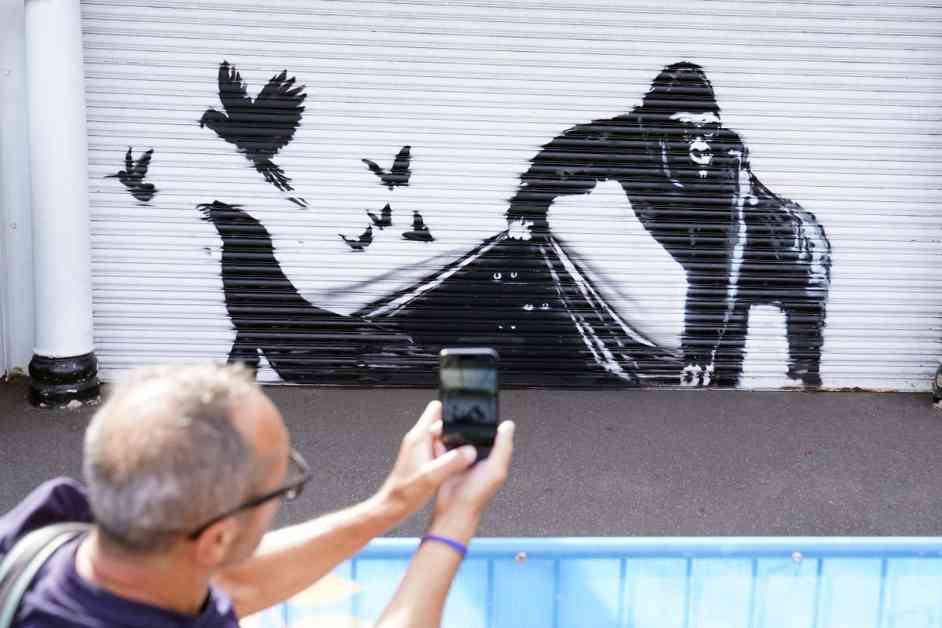London Zoo recently made headlines when it announced the removal of a Banksy artwork for safekeeping. The piece, which depicted a gorilla lifting up a shutter to allow birds and a seal to escape, had been a popular attraction at the zoo. The decision to remove the artwork sparked controversy among fans of the elusive street artist and the general public.
London Zoo’s Decision
According to Rebecca Blanchard, the media manager at London Zoo, the decision to remove the Banksy artwork was made in order to ensure its safety and preservation. The zoo, which is currently experiencing a busy summer period, wanted to make use of its full entrance without risking any damage to the piece. Blanchard expressed the zoo’s excitement at being chosen as the location for what could potentially be the grand finale of Banksy’s series of animal-themed artworks across the capital.
The removal of the artwork was met with mixed reactions from the public. While some understood the need to protect the piece, others were disappointed that they could no longer view the artwork in person. London Zoo responded to comments on social media, assuring fans that they were working on preserving the Banksy artwork and acknowledging its significance in the zoo’s history.
Controversy and Defacement
The Banksy series in London has not been without its share of controversy and defacement. Several of the artworks, including the one at London Zoo, have faced vandalism and theft. The rhino artwork, which depicted a rhino mounted on a car with a traffic cone on its bonnet, was defaced shortly after its public announcement. Similarly, the silhouette of a wolf howling on a satellite dish in Peckham was stolen from a roof, and a stretching cat on an advertising hoarding in north-west London was removed just hours after it was unveiled.
The defacement and theft of Banksy’s artworks highlight the challenges faced by street artists in preserving their work in public spaces. Despite efforts to protect the pieces, such as using Perspex covers or hiring security personnel, some individuals still manage to vandalize or steal the artworks. The incidents also raise questions about the value of street art and the rights of artists to protect their creations.
Impact on Street Art
The removal of Banksy’s artwork at London Zoo and the controversy surrounding the series of artworks in London have reignited discussions about the role of street art in society. Street art, which is often created without permission and in public spaces, can be subject to vandalism, theft, or removal by authorities. The case of Banksy’s series in London sheds light on the challenges faced by street artists in preserving their work and maintaining its integrity.
The popularity of Banksy’s artworks has also raised questions about the commercialization of street art and the artist’s intentions. While Banksy is known for his anti-establishment and anti-capitalist themes, his works have been sold for millions of dollars and displayed in galleries around the world. The removal of the artwork at London Zoo for safekeeping raises questions about the commodification of street art and the balance between preserving it for public enjoyment and commercializing it for profit.
In conclusion, the removal of Banksy’s artwork at London Zoo has sparked controversy and raised important questions about the preservation and protection of street art. Despite the challenges faced by street artists in maintaining their work in public spaces, the impact of their creations on society cannot be denied. The Banksy series in London serves as a reminder of the power of art to provoke thought, inspire creativity, and challenge the status quo. As the debate over street art continues, it is essential to consider the value of artistic expression and the importance of preserving it for future generations to enjoy.












